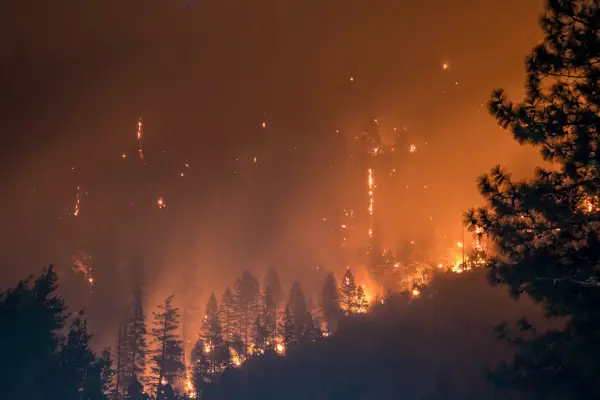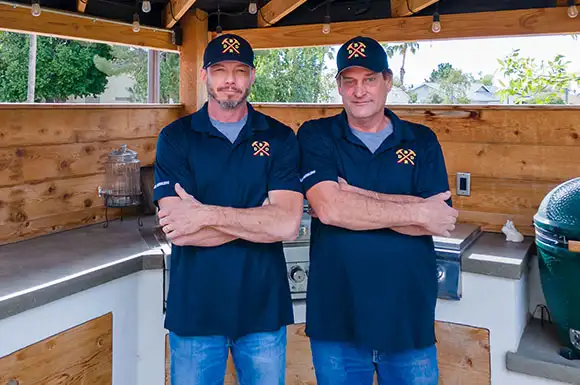Unfortunately, in the arid forests of norther Arizona, wildfires are a prominent risk to homeowners. This is especially true in Show Low and the surrounding areas. Fire can be devastating, if you aren’t insured. Aside from insurance though, is there anything else homeowners can do? Fortunately, people who are either building or remodeling homes in the area can take steps to build a more fire-resistant home that could offer that extra peace of mind.
Today we’ll show you how to invest in a fire resistant home, as well as some tips on preventing home fires for existing homes. We’ll show you what structures you can fireproof to effectively protect your home, how you can trim back foliage to safeguard your family, as well as a few tips for how to prevent vehicle fires from growing into house fires.
Using Fire-Proof or Fire-Resistant Home Construction Materials
Incorporating fire-resistant materials in home construction significantly enhances safety and durability. From roofing to walls and flooring, these materials can slow fire spread, providing crucial time for evacuation and firefighting efforts. They also reduce property damage, potentially lowering insurance costs and increasing resale value. Ultimately, fire-proof materials offer peace of mind and long-term protection with a fire resistant home.
Roofing
Fire-resistant roofing materials like clay tiles, slate, and metal offer superior protection against wildfires and airborne embers. Concrete tiles and fiber cement shingles also provide excellent fire resistance. These options can significantly reduce the risk of roof ignition during a fire event.
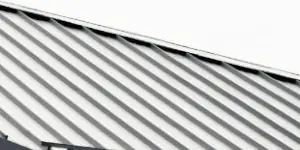
Windows
Fireproof windows, made with tempered or laminated glass, enhance home safety by resisting breakage and preventing fire spread. Some feature intumescent layers that expand when heated, creating a barrier. These windows can withstand high temperatures, buying crucial time during emergencies and protecting property.
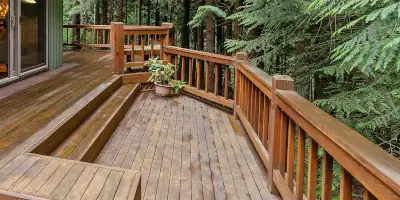
Decking
Decking is often overlooked as a fire hazard, but it can be a significant risk during wildfires. To increase fire resistance, choose materials like fiber cement, metal, or fire-retardant-treated wood. Using fire-resistant underlayment and keeping the area beneath the deck clear of debris can both serve to improve fire resistance.
Fencing
Wooden fences can serve as fuel for fires, potentially leading flames directly to your home. To mitigate this risk, consider using non-combustible materials like metal, stone, or concrete for fencing, especially near the house. If using wood, opt for fire-resistant treatments or create breaks using non-flammable sections. Regular maintenance and keeping the fence clear of vegetation can also contribute to a fire resistant home.
Designing with Emergency Exits In Mind
When designing custom homes, prioritize fire-safe exits. Plan wide, easily accessible pathways from all areas of the house to the outdoors. Use non-combustible materials like concrete or stone for these exit routes. Include multiple exit points on different sides of the home. Design landscaping to maintain a fire-resistant zone around these exits. Ensure all doors leading to exits are fire-rated and easy to open.
Building A Detached Garage or Shed
Building a detached garage on your property, when space allows, can significantly enhance fire safety. By separating vehicles from the main living area, you reduce the risk of a car fire spreading to your home. This provides an layer of protection against vehicular fires.

When designing your custom home layout, consider placing sheds at a safe distance from the main house. Many sheds store flammable chemicals, paints, and fuels, which pose a fire risk. Keeping these structures separate reduces the chance of a shed fire spreading to your home. Aim for at least 30 feet of clearance, using fire-resistant landscaping in between.
Using Advanced Site Planning
Preparing the site for your home is a crucial for a fire resistant home. By creating defensible space, free of vegetation, you reduce fuel for wildfires and protect your home. This process involves removing dry brush, trimming trees, and maintaining a 30-ft buffer zone of low-growing, fire-resistant plants.
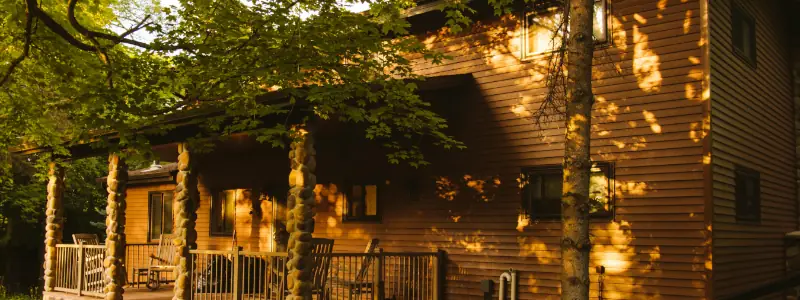
Trees
Removing dead or diseased trees can help contribute to a fire resistant home as they’re highly combustible. Thinning out dense clusters, especially near buildings can also help. Pruning lower branches to prevent “ladder fuels” that allow fires to climb. You can also replace highly flammable species with fire-resistant alternatives.
Debris
Regularly clearing debris from your property is essential for a fire resistant home. Removing fallen leaves, branches, and dead vegetation, and keeping gutters clean can help reduce the potential for wildfires spreading across your property.
Fire-resistant home design is crucial when building or remodeling a custom home in Show Low and the White Mountains region. From choosing non-combustible materials for roofing and siding to strategic placement of structures like garages and sheds, every decision can enhance safety. Create defensible space, install fire-resistant windows, and plan multiple escape routes. Regular maintenance of your property is equally important. By incorporating these elements, you’re not just building a fire resistant house, but creating a safer, more resilient home for you and your family.

